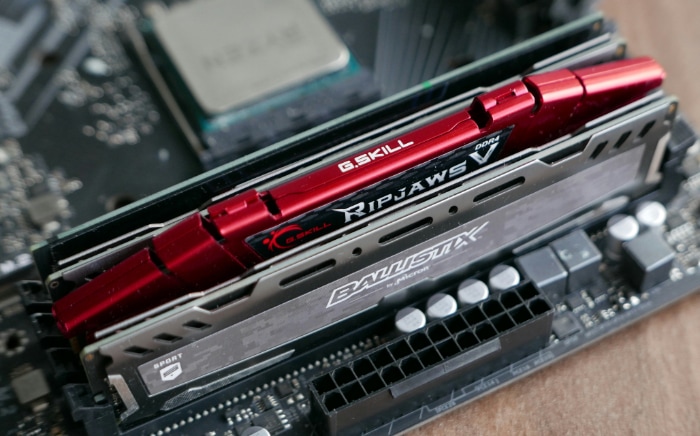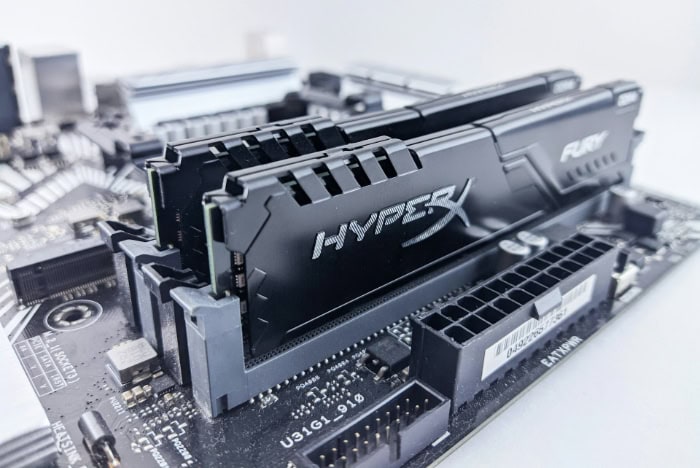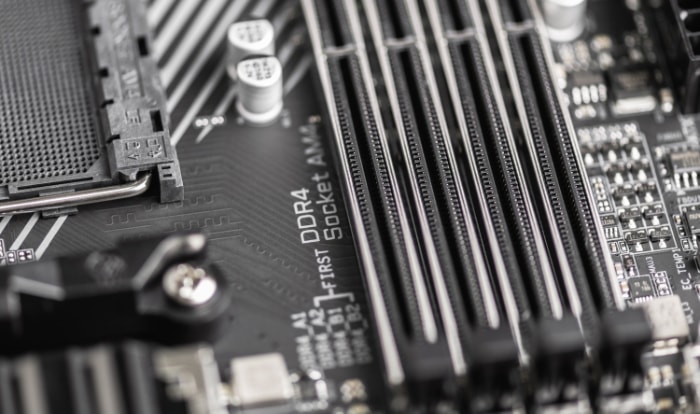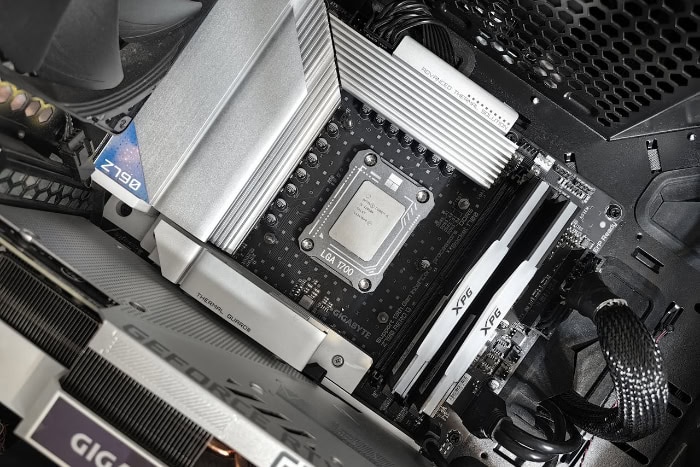Single Channel vs. Dual Channel RAM: Complete Breakdown

For anyone assembling or upgrading a computer, RAM often seems straightforward, until it comes time to decide between single channel and dual channel configurations. That choice quietly influences how much data can flow between your memory and processor at any moment, sometimes changing the way games run or creative projects render.
Some setups see a significant speed boost, while others barely notice.
Architecture and Terminology
RAM channel configuration may sound technical, but it forms the foundation for how your computer’s memory communicates with the processor. Each channel represents a pathway through which data flows from the RAM to the CPU.
The way your memory is set up can either restrict or expand that bandwidth, which makes a significant impact on certain workloads.
What “Channels” Mean
A memory channel simply refers to a 64-bit wide data path connecting the memory modules to the CPU. When only one stick of RAM is installed, the memory operates in single channel mode, offering a single 64-bit pathway.
Add another identical module in the correct slot, and the system transitions to dual channel mode, essentially doubling the bandwidth to 128 bits. This difference matters because a wider data bus allows more information to travel simultaneously between the RAM and processor, potentially improving speed and efficiency for tasks that benefit from increased memory throughput.
The impact is similar to expanding a single-lane road into a two-lane highway. With more lanes or channels, there is less congestion, so data moves faster and more smoothly.
Single channel mode is completely functional and sufficient for many day-to-day activities, but dual channel setups allow compatible systems to move more information at once, reducing wait times for tasks that rely heavily on memory speed.
How Motherboards Enable Each Mode
Your motherboard plays a crucial role in determining if your system can benefit from multiple memory channels. Modern mainstream motherboards come equipped with an integrated memory controller, typically inside the CPU itself.
This controller is responsible for facilitating communication between your RAM and CPU, and it determines how many channels can be used at once.
Motherboard manufacturers design DIMM (Dual Inline Memory Module) slots in pairs, such as A2 and B2, that correspond to each channel. For dual channel mode to operate, memory modules need to be installed in the correct matching slots.
It’s common for motherboards to color-code these slots or label them in the manual. Incorrect placement of RAM sticks, even if both slots are filled, can cause your system to default back to single channel mode, limiting performance gains that dual channel can provide.
Always consulting the motherboard manual during installation helps ensure the proper mode is enabled.
Checking Your Current Configuration
Knowing your current RAM channel configuration can help you spot potential performance issues or help plan an upgrade. The BIOS, accessible during system boot, typically displays memory configuration details, including the number of active channels.
For users who prefer to check from within Windows, tools like CPU-Z offer an easy way to verify how your memory is operating. After installing and running CPU-Z, the ‘Memory' tab will display information such as channel number, frequency, and other relevant details at a glance.
Spotting ‘Single' as your channel mode means your system is only using one memory pathway, whereas ‘Dual' indicates both are being utilized. Sometimes, a system may drop into single channel due to incorrectly seated DIMMs or using mismatched memory sticks.
Regularly checking your configuration, especially after installing new memory, can prevent accidental performance losses and ensure you're getting the most bandwidth available to your hardware.
Performance Impact in Real-World Scenarios

RAM channel configuration doesn’t just look good on a specification sheet, it plays a real role in how smoothly your system runs various types of tasks. The impact of single versus dual channel memory depends heavily on what you’re doing with your PC.
Some scenarios, such as gaming with integrated graphics or demanding creative projects, can take full advantage of the extra bandwidth dual channel offers.
Gaming with Discrete vs. Integrated GPUs
Gaming is one of the clearest areas where memory bandwidth can make or break performance, especially when you factor in the type of graphics hardware your system uses. Discrete GPUs come with their own dedicated video memory, so system RAM speed and bandwidth have a limited role in gaming frame rates for those setups.
Most modern games running on systems with a dedicated graphics card will see only slight upticks in performance when switching from single to dual channel memory. The main benefit may be slightly improved frame-time consistency or small boosts in minimum FPS.
Integrated graphics paint a much different picture. Without their own dedicated memory, iGPUs rely fully on system RAM for both graphics and general computing tasks.
Dual channel configurations provide twice the memory bandwidth, directly feeding the iGPU with more data per second. Players using laptops or desktops with integrated graphics often notice a meaningful increase in both overall frame rates and smoothness, especially in titles that depend on rapid access to large textures and assets.
Complex or graphically demanding games typically run far better with dual channel RAM, which can turn an unplayable experience into a surprisingly smooth one.
Content-Creation Workloads
Jobs like video editing, 3D rendering, and content compression may not seem like they’d stress system RAM, but their demands can actually scale with available memory bandwidth. Creative professionals working with large high-resolution video files or intricate project timelines benefit from faster RAM, and moving from single to dual channel lets more data flow freely to and from the processor.
Scrubbing through lengthy video sequences, previewing effects, and exporting projects all feel quicker as bottlenecks are eased.
Rendering and data compression workloads, which send huge amounts of information back and forth between storage, RAM, and CPU, also get along well with increased bandwidth. Dual channel set-ups help clear traffic jams that might otherwise slow down batch exports or intricate renders, letting you complete your projects more efficiently.
Users dealing with large raw image files or extensive audio tracks can also see meaningful reductions in wait times during save, load, or rendering operations.
Everyday Productivity
Tasks like web browsing, working with documents, or attending online classes don’t put much strain on memory bandwidth. Most everyday productivity work uses a tiny fraction of the available RAM speed or capacity at any moment, so moving from single to dual channel in these scenarios produces very little noticeable change.
Opening browser tabs, editing spreadsheets, and writing reports all depend much more on processor responsiveness and storage speed.
For students, office workers, or general home users, the main requirement is having enough total RAM for the number of apps in use, rather than squeezing every last drop of bandwidth from the hardware. Even on laptops, single channel RAM rarely slows down day-to-day basics, unless you step into lightweight gaming or creative pursuits.
For straightforward productivity and multitasking, channel configuration stays largely in the background, with only rare situations where the difference surfaces.
Cost-Benefit Analysis

Balancing memory performance with your budget and future needs is a familiar concern for anyone building or upgrading a computer. Both single and dual channel setups come with their own set of advantages and trade-offs.
While dual channel can unlock better bandwidth and smoother experiences in some workloads, sticking with a single module can save money upfront and potentially make future upgrades easier.
Price per Gigabyte vs. Immediate Bandwidth
Opting for a single RAM stick can seem like the more affordable path, often offering a better price per gigabyte compared to buying a two-stick kit with the same total capacity. This approach stretches your budget, letting you allocate funds elsewhere or simply keep costs lower.
However, adding a second stick immediately enables dual channel operation, which often delivers a notable improvement in bandwidth and real-world responsiveness for tasks that can use the extra lanes.
While one module can certainly run your system, the performance advantage offered by dual channel sometimes justifies a slightly higher upfront cost. Gamers with integrated graphics, video editors, and those who juggle heavy multitasking might appreciate how smoothly everything runs with more bandwidth at their disposal.
For purely basic computing, saving the extra money usually makes sense, as the performance gains go mostly unnoticed.
Upgrade Path Considerations
Leaving a DIMM slot empty now and adding another stick later offers enticing flexibility. Some users like the idea of starting small and expanding memory only if or when the need arises.
However, introducing a second module at a later date carries a couple of risks. Modules with differing speeds, capacities, or chip layouts sometimes refuse to run stably together, or they may default to lower speeds to maintain compatibility.
Those who want to maintain maximum bandwidth and avoid potential mismatches often find it easier to buy a matched kit from the start.
Mixing different modules in the future doesn’t always result in disaster, but it can bring headaches, especially if your memory controller is picky or you push for high speeds. For power users or anyone wanting to set and forget, starting with a dual channel kit tailored to your needs provides greater certainty that your system will perform as expected.
Power & Thermal Implications
Adding a second memory stick introduces a modest increase in power consumption and heat generation, though the difference is mostly noticeable on compact systems like laptops and mini-PCs. Laptops, in particular, benefit from every watt saved, since less heat often translates to quieter fans and longer battery life.
For those running high-performance desktops, power and heat from the extra RAM are so minor that they rarely factor into overall system behavior.
Anyone prioritizing battery duration or ultra-quiet computing may want to weigh the small increase in draw from two sticks against the smoother operation dual channel provides, especially in graphics-heavy tasks. Overall, modern RAM modules are very efficient, so power and thermal considerations usually remain secondary compared to bandwidth and upgrade flexibility.
Compatibility And Installation Best Practices

Getting the full benefit of dual channel memory doesn’t happen by accident. Even high-quality RAM can underperform if modules are mismatched, installed in the wrong slots, or configured incorrectly in the BIOS.
Paying attention to compatibility and following a few best practices makes memory upgrades smooth and helps systems run at their advertised speeds.
Matching DIMMs
To guarantee dual channel operation and avoid stability problems, using memory sticks with identical specifications is highly recommended. Aim for the same capacity, speed (measured in MHz), and timing values (like CAS latency). Matching the number of memory ranks and even the same brand and model further reduces the risk of issues.
Even though many motherboards can operate with mixed modules, slight differences may force both sticks to slow down or drop into less efficient modes.
Matched pairs, often sold as “dual channel kits,” are engineered to run together without compromise. If mixing modules becomes necessary later, try to find RAM with similar specs, but expect possible concessions in speed or timings.
Keeping every stick identical ensures the memory controller can run them in sync, maximizing bandwidth and minimizing the frustration of random crashes or blue screens.
Correct Slot Population
Motherboards group RAM slots in pairs to enable channeling features, and physical placement matters. Slot labels such as “A2” and “B2” often indicate preferred positions for dual channel configurations, but manufacturers also use color-coding to make installation easier.
Placing both sticks in the correct paired slots unlocks dual channel benefits; populating them side by side often leaves the system in single channel mode, halving bandwidth without any warning besides benchmark results.
Checking the motherboard manual before installation pays off. Some systems want the second and fourth slots filled first, others favor the first and third.
Following manufacturer recommendations guarantees activation of dual channel mode, and skips the trial-and-error approach that can waste time. Even seasoned builders double-check slot guidance to avoid accidentally running a capable system in a slower configuration.
BIOS/XMP Configuration
After physical installation, the BIOS makes the difference between standard and optimal memory speeds. Most modern RAM can run at much faster rates than the basic industry standard, but only if performance profiles are enabled in the BIOS.
XMP (Extreme Memory Profile) for Intel motherboards and DOCP for many AMD boards allow users to instantly apply recommended speed and timing values, bringing RAM up to its tested maximum.
Locating and enabling these profiles usually takes just a few clicks during system setup, but skipping this step often leaves memory running at much lower speeds by default. If the system refuses to boot after activation or becomes unstable, returning to BIOS to lower the speed, slightly loosen timings, or update firmware often resolves the problem.
Occasional boot loops or slower-than-expected frequencies can usually be traced back to simple misconfiguration or an outdated BIOS. Taking a few minutes to double-check these settings ensures dual channel RAM works efficiently and reliably, letting you actually experience the performance you paid for.
Troubleshooting And Optimization

Perfect memory performance is not always automatic, especially after a new upgrade or RAM installation. Sometimes systems fall back to single channel mode or run slower than expected.
Small missteps during installation or subtle compatibility quirks can leave users scratching their heads when smooth performance is replaced by lag, crashes, or frustrating stability issues. Effective troubleshooting focuses not only on identifying the signs of trouble but also on applying practical and reliable solutions.
Diagnosing Single-Channel Symptoms
Spotting single channel operation is not always obvious if you are not closely monitoring your hardware. Halved memory bandwidth is one of the main giveaways.
Users may notice lower-than-anticipated benchmark results compared to similar systems, especially in memory-heavy applications. Games and programs that rely on rapid data access can develop sudden stutters or dips in frame rates, even when your CPU and GPU should be more than capable.
Streaming high-resolution video or running multiple demanding apps simultaneously may also feel less responsive. In some cases, hardware monitoring tools such as CPU-Z will report channel mode directly, making confirmation a straightforward process when performance feels off.
Quick Fixes
Simple steps can often resolve frustrations caused by improper channel use. Reseating the RAM sticks in the correct slots is the most common and effective fix.
Sometimes modules may not be fully clicked into place, preventing the motherboard from recognizing both and activating dual channel mode. Verifying the configuration in your motherboard manual ensures sticks use the optimal paired slots.
Updating your motherboard’s BIOS can resolve miscommunication between new memory modules and older motherboards, improving compatibility and potentially restoring intended performance. If the system remains stable but runs RAM slower than advertised, adjusting timing and voltage settings manually may help, though it is best approached with caution if you’re unfamiliar with overclocking principles.
Enabling XMP or DOCP profiles in the BIOS restores most RAM kits to their rated speeds with minimal risk, often rectifying down-clocking or underperformance instantly.
When Dual Channel Still Underperforms
Occasionally, even with dual channel activated, performance lags behind expectations. Other system components often become the limiting factor.
The CPU may bottleneck overall processing speed, or slow storage devices like older hard drives may hold back quick data access. Benchmarking memory bandwidth separately from overall system performance can pinpoint where the problem lies.
Memory architecture also plays a part. Dual rank modules may actually provide a further boost in throughput compared to single rank, but not all motherboards or CPUs will support these differences equally well.
Checking the specifics of your memory sticks can clarify if further bandwidth lies untapped. If troubleshooting fails to yield improvement, a holistic review of your full system configuration, including CPU, storage, and even power settings, may uncover hidden causes of subpar memory performance.
Ensuring every piece works together helps you squeeze the most speed from your hardware investment.
Conclusion
Dual channel memory configurations bring noticeable improvements in scenarios that demand high bandwidth, such as gaming with integrated graphics and content-creation workloads like video editing or 3D rendering. Users relying on their system’s integrated GPU or those frequently moving large files in creative projects often experience smoother performance, higher frame rates, and reduced stuttering when memory bandwidth is maximized.
On the other hand, for everyday use like web browsing, simple office applications, and light multitasking, single channel memory is usually more than adequate. For many, the difference in performance between single and dual channel setups remains barely perceptible during general productivity tasks.
Choosing between single and dual channel should align with your actual performance needs, current budget, and future upgrade plans. If maximizing speed for games or creative software is a priority, investing in matched memory modules for dual channel operation makes sense.
For those focused on affordability or flexibility, starting with a single stick and keeping an upgrade path open is a valid choice, especially if your workflow remains light.
Carefully considering your intended use and how far you want to push your system ensures you extract the right balance of speed, cost efficiency, and upgrade potential from your memory configuration.


